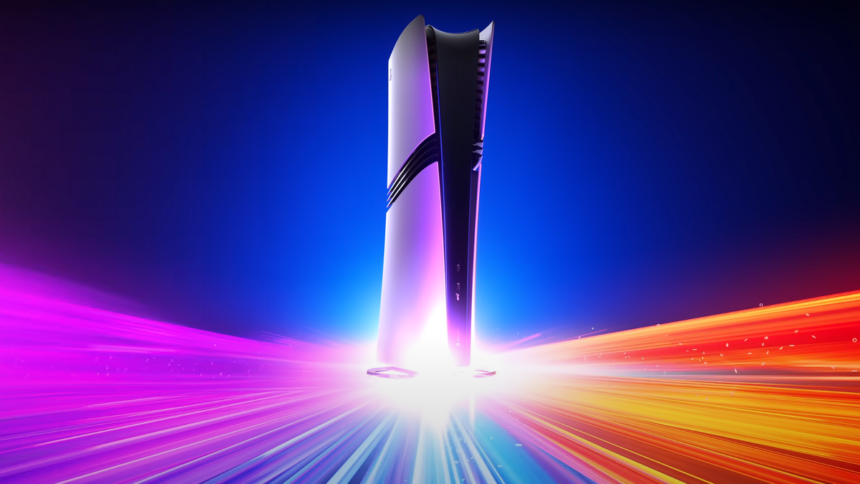The PS5 Pro has sparked a lot of debate, not due to its enhanced features or technical improvements, but because of its price tag of $700 in the U.S. Fans, influencers, and tech critics alike have voiced frustration, claiming the cost is excessive, and comparing it to the PlayStation 3, which caused a similar uproar when it launched at $600 back in 2006. Many even point out that the PS5 Pro, with its lack of a disc drive, feels like a questionable value proposition.
However, there are legitimate reasons behind this high price:
SSD and memory prices on the rise
The steep price of the PS5 Pro, set at $700, is largely due to rising hardware costs, especially in SSDs and memory. The price surge for these components can be traced back to the post-pandemic recovery efforts of manufacturers like Samsung, Western Digital, and Kioxia, who have consistently raised prices to recoup losses.
In 2023, these increases were further exacerbated by the explosive demand for AI technologies and AI PCs, which required faster RAM and higher-capacity SSDs. The sudden surge in demand outpaced the supply, forcing manufacturers to hike prices even more—SSD and memory prices rose between 40% and 50% in 2024 alone.
This industry-wide price surge affected Sony directly. The PS5 Pro features improved memory (upgraded from 14,000 MT/s to 18,000 MT/s) and doubles its storage capacity to a 2 TB SSD. Given the rising costs of these components, Sony’s upgraded SSD—manufactured by one of the companies driving price increases—significantly impacts the console’s final price.
To put it in perspective, a 1 TB SSD similar to the one in the PS5 Slim costs around $180, while a 2 TB SSD can run as high as $300—a $120 difference in storage alone, reflecting just how much these component costs are contributing to the PS5 Pro’s price.
Ultimately, the high price tag reflects the broader struggles of the hardware industry in 2024, as rising component costs across SSDs and memory have driven up production expenses, leaving Sony little choice but to pass the costs on to consumers.
| Comparison: PlayStation 5 Pro x PlayStation 5 x Xbox Series | |||
| PS5 Pro | PS5 | Xbox Series X | |
| CPU | Viola | Obreon | Scarlett |
| Architecture | AMD Zen2 8-core | AMD Zen2 8-core | AMD Zen2 8-core |
| Lithograph | TSMC’s 4nm | TSMC’s 7nm | TSMC’s 7nm |
| Die size | N/A | 308mm² | 360.5mm² |
| CPU Clock | Up to 3.85 GHz | Up to 3.55 GHz | Up to 3.8 GHz |
| NPU | XDNA 2 | No | No |
| GPU | RDNA 3 and RDNA 4 | RDNA 2 | RDNA 2 |
| Computational units | 60 | 36 | 52 |
| GPU Clock | N/A | Up to 2.23 GHz | Up to 1.82 GHz |
| GPU Performance | N/A | Up to 10.3 TFLOPs | Up to 12.1 TFLOPs |
| RAM Memory | 16GB GDDR6 | 16GB GDDR6 | 16GB GDDR6 |
| Memory bus | 256-bit | 256-bit | 320-bit |
| Bandwidth | 576 GB/s | 448 GB/s | 560 GB/s |
| Memory speed | 18,000 MT/s | 14,000 MT/s | 14,000 MT/s |
| Storage | 2TB NVMe | 825GB NVMe | 1TB NVMe |
| Storage expansion | NVMe SSD | NVMe SSD | Up to 1TB with a proprietary card |
| Launch price | US$ 700 | US$399 (Slim) to US$499 (Fat) | US$ 499 |
| Launch | November 7, 2024 | November 12, 2020 | November 10, 2020 |
Updated SoC and new GPU
Sony has highlighted the PS5 Pro’s significant power boost, claiming smoother gameplay with 60 FPS and 4K resolution, but many feel that the price of $700 isn’t justified. The underlying technical advancements, however, suggest a substantial leap in performance—achieved through an upgraded SoC and a modern GPU.
The PS5 Pro uses a new Viola SoC, replacing the 6nm Oberon SoC from the original PS5. The Viola SoC is built on 4nm lithography by TSMC, which not only improves efficiency but also raises costs, especially with the high demand for TSMC’s semiconductors and the future push toward smaller 2nm lithography. Manufacturing such semi-custom chips, particularly at 4nm, increases expenses due to their specificity and advanced design.
A major part of this performance boost comes from the GPU. The base PS5 used an RDNA2-based GPU, which, while solid, is now outclassed in both energy efficiency and AI capabilities. The PS5 Pro, however, features a redesigned GPU based on RDNA3 and may include ray tracing accelerators from RDNA4, a technology not yet seen in AMD’s consumer graphics cards. This suggests that the PS5 Pro’s ray tracing performance is a huge step forward, making it stand out in gaming graphics.
To put this in perspective, the PS5 Slim’s GPU is comparable to the Radeon RX 5700 XT (released in 2019), while the PS5 Pro’s GPU resembles the more recent Radeon RX 7700 XT (released in 2023). This leap mirrors the market value: the RX 5700 XT sells for about $300 (used), while the RX 7700 XT is priced around $600—a difference of $300. This significant price gap highlights how the PS5 Pro’s hardware upgrade is critical in its higher cost.
The PS5 Pro’s price reflects the premium components, particularly in storage, memory, and graphics, all contributing to the 45% performance boost over the original PS5. Considering these factors, the $700 price tag makes more sense, especially in the current hardware market, where demand for cutting-edge components drives prices higher across the board.
AI Image Upscaling
Artificial intelligence plays a significant role in the increased price of the PS5 Pro, particularly through its integration into new features like PlayStation Spectral Super Resolution (PSSR). AI drives this advanced upscaling technology and allows the console to deliver 60 FPS at 4K resolution without forcing players to compromise between performance and visual fidelity.
The PS5 Pro requires a more powerful GPU, faster memory, and larger internal storage for such a feature to function seamlessly. This is because AI-based processing, such as PSSR, demands specific hardware optimizations, including structures aimed at AI tasks, which come at a premium cost. The PS5 Pro reflects this in the XDNA 2 NPU, which delivers 50 TOPS of AI performance and drives much of the machine learning capabilities behind PSSR.
Including these cutting-edge components, like the faster 18,000 MT/s GDDR6 memory and 2 TB SSD, directly impacts the cost of manufacturing. Since these components are newer and in high demand—especially in industries where AI technology is booming—prices have soared. The ongoing surge in SSDs and memory prices, driven by market shortages and the increased need for high-performance components in AI systems, further compounds this.
Thus, while PSSR improves the gaming experience, it also contributes to the PS5 Pro’s overall price by necessitating expensive, advanced hardware—costs that ultimately get passed on to the consumer.
Lack of competition
Sony’s pricing strategy for the PS5 Pro, set at $700, reflects technical upgrades and broader economic and market factors that have shaped its decision. Traditionally, Sony has seen Microsoft as its main competitor in the gaming console race, but the dynamics of this competition have shifted. Now more focused on Game Pass and Cloud Gaming across various devices, Xbox seems to have pivoted away from the hardware race, leaving Sony in a dominant position for high-performance consoles.
This shift in competition has allowed Sony to set a premium price for the PS5 Pro without significant fear of losing market share. Analysts like Serkan Toto expected the console to be priced at $600 or $650, which would still ensure Sony’s profitability. However, the jump to $700 indicates that Sony is leveraging its advantage in the console space, knowing there’s little pressure from Xbox regarding high-end hardware.
In addition to market dominance, economic pressures have also influenced pricing decisions. Inflation and currency devaluations have hit major economies, driving up costs. This has forced companies, including gaming giants like Riot Games, Unity, Activision-Blizzard, Microsoft, and Sony, to implement layoffs and reassess their profitability strategies. Longer development cycles and the shift towards service-based games have further complicated the economics of console production, making investing in expensive hardware without immediate payoff riskier.
The development and quick failure of games like Concord, which took 8 years to develop but was shut down shortly after launch due to lack of interest, illustrate how cautious Sony has become. The company is pressured to maximize profits and minimize risks, especially with the high costs of developing and maintaining new games. By pricing the PS5 Pro at $700, Sony is signaling a desire to maintain a strong profit margin, ensuring it doesn’t face losses, even in a challenging economic environment.
However, despite technical advancements like faster memory, AI-powered PSSR, and improved GPU, the PS5 Pro has yet to justify its existence fully. PlayStation fans are frustrated by the lack of exclusive games or experiences that take advantage of the console’s capabilities. Without compelling new titles, the PS5 Pro appears to be more of a hardware update than a transformative next step for the platform, raising questions about whether it’s worth the price tag for consumers.











